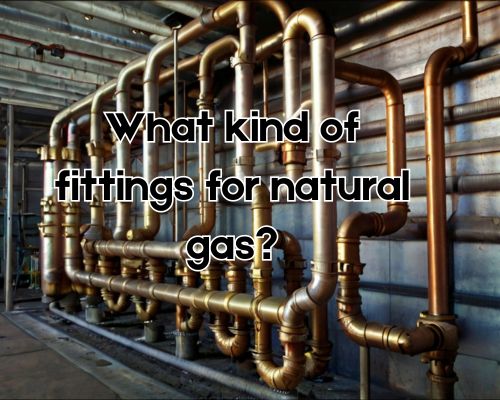If you’re planning to install a natural gas system, you need to choose the right fittings to ensure safety and compliance with building codes. Natural gas fittings are designed to connect pipes, hoses, and appliances. They come in various types and sizes to suit different applications.

“When selecting fittings for natural gas, make sure to choose those that are specifically designed for use with this type of gas. Natural gas fittings must meet strict safety standards to prevent leaks and other hazards. They must also comply with Australian building codes to ensure that your installation is legal and safe.” said Dean Owens of Plumber Warragul.
In this article, we’ll take a closer look at the different types of gas fittings available. We’ll provide you with the information you need to choose the right fittings for your natural gas installation. Whether you’re a DIY enthusiast or a professional gas fitter, this guide will help you make informed decisions and ensure that your natural gas system is safe and reliable.
Types of Gas Fittings and Materials
When selecting gas fittings, you’ll find several types and materials to choose from, depending on the application. In this section, we will delve into the different types of gas fittings and their materials.
Metal Fittings for Durability
Metal fittings are popular for their durability and resistance to corrosion. Steel, iron, and copper are commonly used metals for gas fittings. Black iron and steel pipes are commonly used for gas transportation in industrial and residential settings. Meanwhile, copper pipes are also a popular choice for gas fittings due to their corrosion-resistant properties.
Non-Metal Options
In addition to metal fittings, non-metal options are also available for gas fittings. Plastic fittings are a good option for low-pressure applications, and they are lightweight and easy to install. On the other hand, corrugated stainless steel tubing (CSST) is a flexible tubing option that is commonly used for gas piping systems in residential and commercial settings. CSST is durable and resistant to corrosion, making it a popular choice for gas fittings.
Specialised Fittings
There are also specialised fittings available for specific applications. Valves and regulators are essential components of gas piping systems, controlling the flow and pressure of gas. Meanwhile, adapter fittings allow for the connection of different types of gas fittings, such as steel to copper or plastic. Tees and coupling fittings are used to connect pipes of the same diameter, while compression fittings are used to connect pipes of different diameters. Lastly, elbow fittings are used to change the direction of gas flow.
Installation and Maintenance
Safe Installation Practices
When installing gas piping, safety should be your top priority. Always follow local regulations and licensing requirements, and consider hiring a professional plumber like Plumber Warragul, to ensure that the installation is done correctly.
Proper ventilation is also important to prevent the buildup of dangerous gases.
When installing gas piping, make sure to use the right materials and fittings. Copper pipes are a popular option due to their flexibility and ease of installation. Meanwhile, stainless steel fittings are also a good choice because they are strong, durable, and corrosion-resistant. When making connections, use Teflon tape or pipe joint compound to ensure a tight seal.
Cutting and soldering pipes should only be done by experienced professionals. If you’re not confident in your abilities, hire a licensed plumber to do the job. When digging to install gas piping, make sure to call your local utility company to identify any underground gas lines before you start.
Regular Inspections and Repairs
To ensure the safety of your gas supply system, regular inspections and repairs are essential. Look for signs of corrosion, such as rust or discoloration, and check for gas leaks by using a gas detector or soapy water.
If you detect a gas leak, turn off the gas supply immediately and contact a licensed plumber.
Regular maintenance can also help prevent problems before they occur. Check your water heater regularly to make sure it’s functioning properly, and have it serviced by a professional plumber at least once a year. Keep your gas pressure at the recommended level to prevent damage to your gas system.
Understanding Gas Piping Systems
To properly maintain your gas piping system, it’s important to understand how it works.
The main gas line brings gas from the gas supply system to your home, where it is distributed to your appliances.
Make sure that your gas line is properly sized to handle the load of your appliances.
If you’re unsure about any aspect of your gas piping system, don’t hesitate to contact a licensed plumber.
They can help you understand your system and provide guidance on how to maintain it properly.
With proper installation and maintenance, your gas piping system can provide reliable and safe service for years to come.